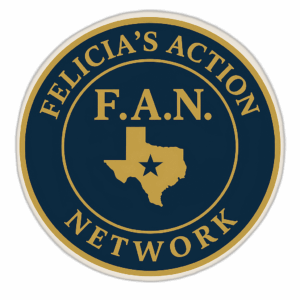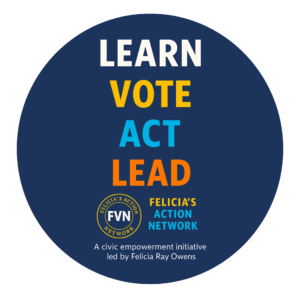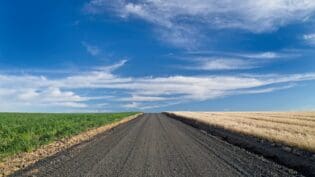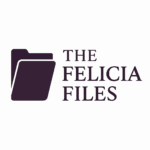
Young Snipers in Love Across The Gorge
February 18, 2025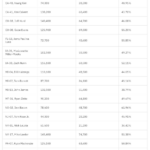
‘Hands Off Medicaid’ Events Nationwide Target GOP Over Plan for Massive Cuts
February 18, 2025In her 2024 Nieman Lab prediction, Anika Anand, then deputy director of Local Independent Online News (LION) Publishers, described what she saw as a need for more coordination among journalism support organizations — sometimes referred to as intermediaries — to better serve journalists and newsrooms.
“The lack of coordination across funders, associations, academic institutions, consulting firms, technology platforms, and other organizations that exist to serve journalists and newsrooms ultimately undermines the ecosystems we’re trying to strengthen,” she wrote. “The problem is not intermediaries receiving too much foundation money; the problem is the lack of coordination between these intermediaries to enable the most efficient and best use of existing resources. That’s because there’s no vision or infrastructure to help us better leverage what we’re all working on to more effectively serve news businesses.”
In the year since writing that prediction, Anand has departed LION and partnered with Darryl Holliday, co-founder of City Bureau and the Documenters Network and co-author of the Roadmap for Local News report, to launch Commoner Company, which they describe as a “civic media lab for hire.” In a report released last month, commissioned by early patron Democracy Fund, Anand and Holliday focused on the question Anand had begun to probe in her prediction: What is needed for support organizations to more efficiently and effectively serve the local news field?
Anand and Holliday identify more than 100 such organizations operating in the U.S. today, and trace their proliferation back to a “decade-long shift” between roughly 2009 and 2017 in response to the changing needs of the local news space and a new generation of nonprofit local newsrooms. For this report, the authors drew on conversations with 22 local news field leaders, a six-person advisory council, and their own experience in local news. They describe some of the challenges and tensions that have arisen with that growth in support organizations. (“Critics have questioned philanthropy’s decision to continue investing in these entities, called for support organizations to better address news businesses’ needs, labeled them as bureaucratic gatekeepers, and advocated for more strategic alliance building.”) They present this diagnosis (emphasis theirs):
We believe these are all symptoms of a core problem: There is no shared sense of what field infrastructure is needed because we have not, as a local news field, agreed on how we know whether the field is succeeding. In other words, we have no way to measure whether the money being funneled into support organizations is making a difference because we have no way to measure what that difference is.
Drawing on a “field-building” framework as a strategy for driving social change, Anand and Holliday prescribe a multi-year course of action to help the entire local news field “mature”: “This report aims to help support organizations foster a shared identity so that, in collaboration with funders and newsmakers, they can execute on our primary recommendation: Create a field-level agenda for the local news field.”
In a post released alongside the report, Anand and Holliday define a field-level agenda as “a plan that brings an expansive but representative cohort of the field together to define common goals within a collaborative rubric” that “should help the field more effectively organize itself in service of communities’ information needs.” Done right, they argue, field building can grow the speed, scale, strength, and efficacy of efforts to revitalize local news.
“One tension I encountered during our research is that some people have a desire to build consensus among many different stakeholders within the local news field, while others put a stake in the ground and say, ‘Here’s what I’m gonna do, come join if you want,’” Anand said. In her view, the field has primarily taken the latter approach in the last decade, which has generally “been a good thing because we’ve gotten to throw a lot of things at the wall and see what sticks.” But now, she thinks, is “a moment that calls for some consensus building while still making room for differences in execution that continue to spur experimentation and progress.”
“We, as a field, need to be able to make coherent, persuasive, rigorous, and empirical arguments for why local news and information is critical to the health and safety of our communities,” Holliday said.
Holliday and Anand say a field-level agenda should address at least four goals — and give examples of what addressing each could look like, for newsrooms, support organizations, and funders:
- Codify best practices and instruments for assessing community information needs.
- Make support organizations’ offerings more accessible and navigable while streamlining, consolidating, and strengthening those offerings.
- Engage in public policy development to generate public funding for newsmakers and shift the narrative on the value of local news.
- Draw on knowledge from outside the local news field to attract and develop existing talent and leadership who can strengthen business practices and reimagine the role of local news and information for communities.
Some of their most concrete ideas relate to that second goal; for instance, Holliday and Anand suggest support organizations consider creating a “Yellow Pages” directory and a hotline “to help newsmakers identify support, funders identify who to support, and support organizations identify overlap and gaps.” There’s movement on at least one of these ideas already: “We’re in talks to build out the directory as soon as possible,” Holliday told me.
Beyond these goals, to solidify the sense of shared identity they see as essential to field-building, Anand and Holliday also offer a “taxonomy” differentiating six different categories of support organizations:
- Funding intermediaries (like the American Journalism Project)
- Associations and networks (like LION and INN)
- Client services (like URL Media and Hearken)
- Researchers and analysts (like the Local News Impact Consortium; Nieman Lab and other news outlets are also listed as examples here)
- Advocates (like Rebuild Local News)
- Educators (like Trusting News and Listening Post Collective)
“We think it’s more useful for the field to align on support organizations’ function and purpose,” the authors write in the report. While support organizations may fit in more than one category, “it’s critical for an organization to primarily identify with one of these groups because it makes it easier to name field peers, potential gaps, and areas of overlap.”
This report was commissioned by a journalism funder, Democracy Fund, but contains recommendations for news orgs, support organizations, and funders alike — so I was curious about who Anand and Holliday saw the report as serving, and whether that audience changed over the course of their research.
As they landed on a field-level agenda as their proposed solution, “the audience for the report evolved” and broadened to speak to all three of those groups, Holliday said. He also pointed out that, sometimes, support orgs and funders are functionally the same. “A good number of journalism support organizations — especially the ones that refer to themselves as intermediaries — were created by funders to serve as proxies for certain areas of work,” he said, “often to focus on identity groups that have unique needs and histories (ex: Black newspapers, military veterans, trans newsmakers).” That means “where a foundation is the majority of funding for a JSO — the distinction between funder and JSO is minimal. In this case, a report for funders is a report for JSOs.”
Reading through the report, I was reminded of a comment Press Forward director Dale Anglin made to me during our interview last spring: “If I’m saying the word ‘journalism’ and you are hearing something different, we are not agreeing on the same problem that we’re even trying to solve.”
“I think what Dale hits on is similar to what we express as the impetus for our report,” Anand said. “Definitions to describe what local news does and how it does it have changed a lot, and not everyone is in agreement on what those changes are. And if the field isn’t in agreement, it becomes very, very difficult to explain to people outside of the field why we need their support in meeting communities’ information needs.”
Holliday pointed to a different comment Anglin made in that interview: “A key part of developing an ecosystem is agreed-upon language. And we don’t have that in journalism.” That, he said, “is a problem we can solve together as a field.” He spelled out “the need to visibilize the local news sectors, cohorts and tribes in a way that helps funders, potential employees and the public navigate our space.”
“Civic media isn’t the same as public media isn’t the same as public access radio/TV isn’t the same as investigative journalism isn’t the same as movement journalism isn’t the same as corporate broadcasting, etc,” he said. “What do these subgroups have in common, what separates them, and what’s a vision for the future that we can work toward together? That question is a tension and an opportunity.”
One particular possible point of tension that stood out to me: In the report’s second recommendation, Anand and Holliday suggests funders should use the Yellow Pages-esque resources “to prompt and inform conversations with support organizations about mergers, joint operating agreements, and closures that could strengthen the field,” citing positive examples like “the dissolution of the News Leaders Association and the intentional sunsetting of the Membership Puzzle Project.”
Among the biggest challenges to implementing the report’s recommendations, according to Anand, is a mindset shift toward thinking as a field, not as an organization.
“We are asking funders, support organizations and newsmakers to think beyond their organizations,” she said. “It’s one thing to say you care about saving or revitalizing local news and then talk very loudly about how your organization is doing that. It’s another thing to say you want to ensure every person in our country has access to news and information that meets their needs and then work with others within and outside the local news field to contextualize the work you’re doing and make sure it’s moving the field closer to that goal.”
Great Job Sophie Culpepper & the Team @ Nieman Lab Source link for sharing this story.
